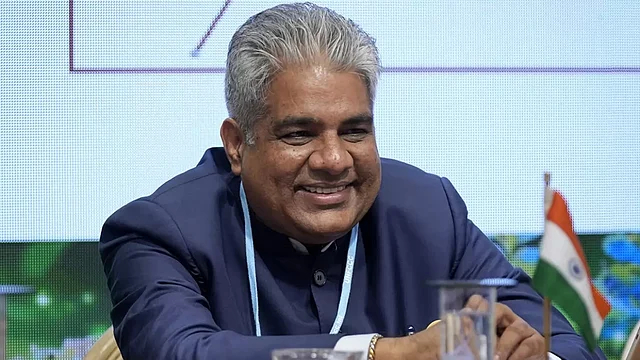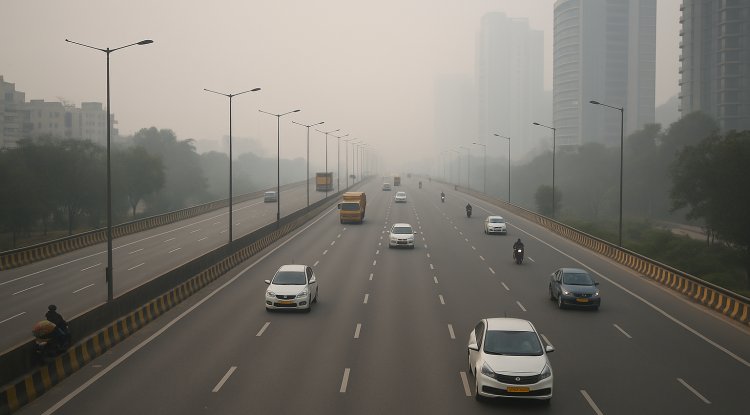India Combats Plastic Pollution and Air Quality Challenges for a Cleaner Future
India tackles plastic pollution and air quality with a 2021 single-use plastic ban, WtE plants generating 400 MW, and NCAP-driven air quality improvements in Delhi, which saw better AQI in 2024. Public support for net-zero goals and private sector efforts like recycling and solar power drive progress toward a sustainable 2070.India fights plastic pollution with bans and WtE plants, while improving air quality in Delhi through NCAP and EV adoption, aiming for a cleaner future by 2070 with strong public and private sector support.

On World Environment Day 2025, India intensified its fight against plastic pollution and air quality issues, critical environmental challenges threatening public health and ecosystems. With 25,000 tonnes of plastic waste generated daily and 63 of the world’s 100 most polluted cities, India faces urgent demands for action. Government bans on single-use plastics, community-driven waste management, and air quality improvements in Delhi, reported better in 2024 than 2023, signal progress. These efforts align with India’s 2070 net-zero goal, aiming to create a cleaner, healthier future.
India’s plastic pollution crisis is staggering, with 277 million tonnes of municipal solid waste (MSW) produced annually, of which 6% is plastic, primarily from packaging, e-commerce, and food delivery. The Indus, Brahmaputra, and Ganges rivers carry significant plastic debris, contributing to 90% of global riverine plastic emissions. A 2021 ban on single-use plastics, enforced through the Plastic Waste Management Amendment Rules, prohibits items with low utility and high littering potential. By 2025, over 100 cities are developing as smart cities with improved waste segregation, though only 5% of collected waste is recycled and 18% composted, with the rest landfilled. The Swachh Bharat Mission (Clean India Mission) promotes multi-stakeholder partnerships, engaging waste pickers, recyclers, and local governments to manage waste effectively.
Companies like Blue Planet are advancing circular waste management, processing legacy waste and promoting biodegradable alternatives. Waste-to-Energy (WtE) infrastructure, with over 110 plants generating 400 MW of clean power, reduces landfill methane emissions and cleans water bodies. Community initiatives, such as those in Ghana where 2,000 waste pickers clean beaches, inspire similar efforts in India, where informal waste pickers are integrated into formal systems. However, challenges persist, as urban India’s rapid growth outpaces waste management infrastructure, and enforcement of plastic bans varies across states, as noted in a World Economic Forum report.
Air quality remains a critical issue, with 13 of the world’s 20 most polluted cities in India, driven by vehicular emissions, industrial waste, crop burning, and coal power plants. Delhi, ranked the 10th most polluted capital in 2021, saw slight improvements in 2024, with the Air Quality Index (AQI) dropping below 1,000 during winter, compared to health emergency levels in prior years. The National Clean Air Programme (NCAP) targets vehicular emissions, road dust, and construction pollution, while Delhi’s Odd-Even Regulation and coal ban in the NCR (excluding thermal plants) aim to curb emissions. A 2023 Yale-CVoter survey found 86% of Indians support the 2070 net-zero goal, with 55% favoring immediate emission reductions, reflecting public demand for cleaner air.
Coal power, generating 70% of India’s electricity, is a major pollutant, with 600 plants lacking adequate cleanup systems, contributing to 720,000 preventable deaths over a decade, per IIT Hyderabad research. The Energy Conservation Act (2022) introduced carbon trading and the Perform, Achieve, and Trade (PAT) scheme, saving 92 million tonnes of oil equivalent. Renewable energy, particularly solar, has grown, with India targeting 500 GW of non-fossil fuel capacity by 2030. Mahindra Group’s solar-powered resorts and recycling facility, CERO, exemplify private sector contributions, recycling 20,000 vehicles and reducing waste.
Public health impacts are severe, with PM2.5 pollution causing high mortality rates, as per WHO 2016 estimates. Microplastics, found in food, water, and air, affect over 50,000 particles consumed annually per person, posing long-term health risks. Government campaigns like the Plastic Hackathon 2021 and eco-friendly festivals promote sustainable behaviors, while 66% of Indians support fuel-efficient vehicles, per Yale-CVoter data. Younger voters, with 18 million first-time voters in 2024, prioritize climate issues, pushing parties like the BJP and Congress to include green policies in manifestos, though critics argue these lack specific coal phase-out strategies.
Delhi’s air quality improvements in 2024 stem from stricter stubble-burning controls and regional NCAP conferences in Mumbai and Guwahati. The city’s electric Gramin Sewa vehicles and smart grid projects reduce emissions, while SEBI’s green bond regulations fund clean energy. Despite progress, India’s fossil fuel emissions rose 4.6% in 2024, per COP29 data, highlighting the need for stronger coal transition policies. Collaborative efforts, including the International Solar Alliance and community-driven waste management, position India as a leader in the global south, though consistent enforcement remains a challenge.
Conclusion
India’s battle against plastic pollution and air quality issues reflects a multifaceted approach, combining policy, private sector innovation, and public engagement. Plastic bans, WtE plants, and circular waste systems address the 25,000-tonne daily plastic crisis, while NCAP, renewable energy, and EV adoption improve air quality. Delhi’s 2024 progress and strong public support for net-zero goals signal a cleaner future, but scaling infrastructure and enforcing regulations are critical to sustaining momentum toward 2070.
What's Your Reaction?

















